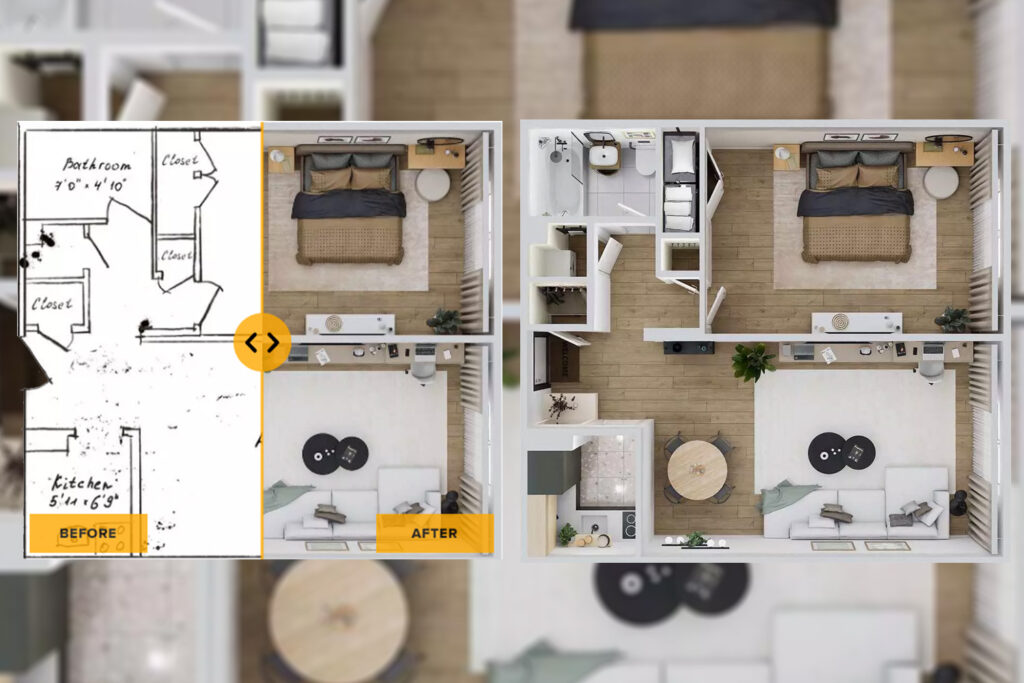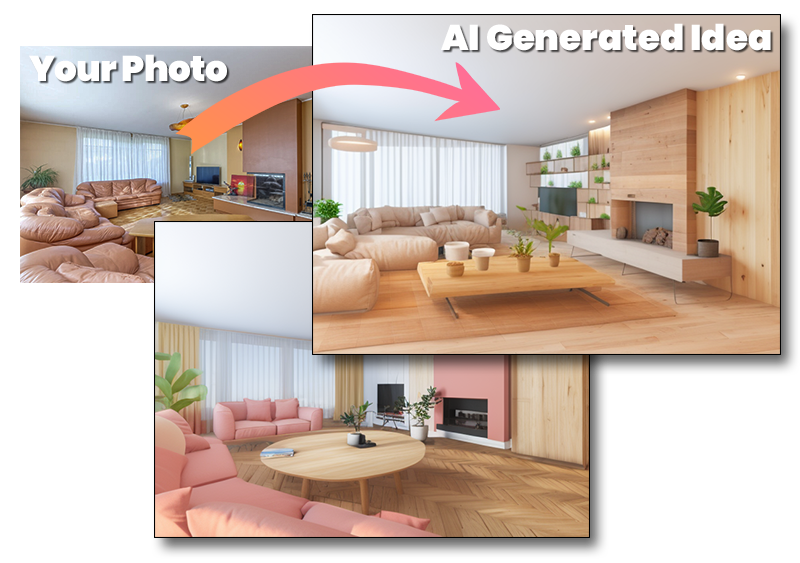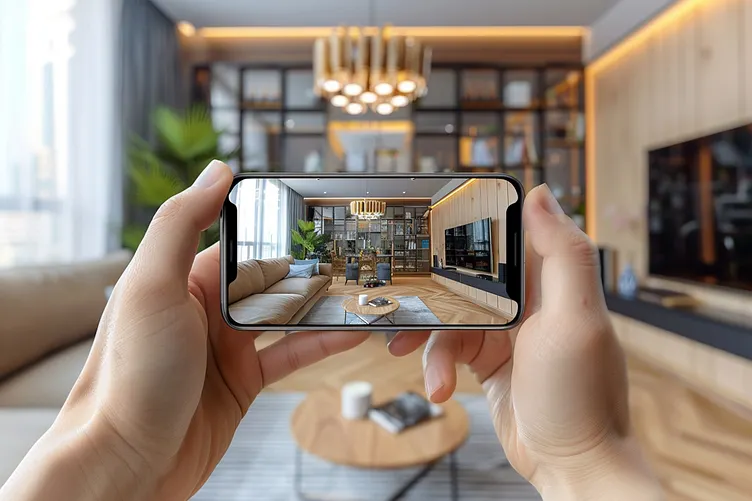Artificial Intelligence (AI) is revolutionizing industries across the board, and interior design is no exception. As technology evolves, AI-powered software tools are transforming how designers approach space planning, color selection, furniture arrangement, and even client interaction. These advanced tools are not just automating mundane tasks; they’re enabling designers to create more personalized, efficient, and innovative designs than ever before. In this post, we’ll explore how AI is reshaping the field of interior design and highlight some of the latest software tools that are making it happen.
1. AI-Powered Space Planning: Streamlining the Design Process

One of the most exciting ways AI is impacting interior design is through space planning. Traditional space planning often involved manually calculating measurements, testing furniture layouts, and relying on intuition to create functional and aesthetically pleasing designs. Today, AI tools can automate and optimize many aspects of this process, saving time and providing valuable insights.
- Key Tools:
- Space Designer 3D: This software offers AI-assisted tools to quickly generate layouts and furniture placements based on room dimensions and style preferences. It analyzes spatial relationships and suggests optimal layouts for furniture and decor.
- Autodesk Revit: With AI-based features, Revit helps interior designers automate the layout design process, ensuring that spaces are functional and compliant with safety regulations.
- How It Works: AI analyzes room measurements, user preferences, and design rules to generate space plans that optimize flow, ergonomics, and functionality. These tools can even adjust designs in real-time based on user feedback, making it easier for designers to test multiple layout options in a fraction of the time.
- Why It’s Great for Designers: AI-enhanced space planning tools help designers quickly explore various layouts, allowing them to create spaces that are both aesthetically pleasing and highly functional. This significantly speeds up the design process and offers more opportunities for creativity.
2. AI for Color and Material Selection

Choosing the right color palette and materials is crucial in creating a cohesive and visually appealing interior. AI tools are now able to assist designers in selecting colors and materials that not only match the client’s preferences but also enhance the overall design. These tools analyze factors like lighting, space usage, and even emotional responses to colors to suggest the best options.
- Key Tools:
- Coloro: Coloro uses AI to predict color trends and provide color palettes that are tailored to specific projects. The platform can also simulate how colors will look in different lighting conditions, helping designers choose the perfect hues for a space.
- Material Bank: Material Bank is an AI-powered platform that offers a comprehensive selection of sustainable materials for interior designers. The platform uses AI to suggest materials based on project needs, budget, and sustainability goals.
- How It Works: AI algorithms analyze large datasets, such as past design trends, market demands, and even psychological studies on color perception, to provide color and material recommendations that fit both the space and the client’s vision. Designers can use these tools to experiment with various options, ensuring that the final design is as harmonious and effective as possible.
- Why It’s Great for Designers: With AI-assisted color and material selection, designers can save time on the trial-and-error process and make more informed decisions. These tools also offer the opportunity to incorporate sustainability and future trends into designs, helping designers stay ahead of the curve.
3. AI in Furniture and Decor Arrangement

Arranging furniture and decor within a space is an art form in itself. AI is now helping designers create layouts that not only maximize functionality but also enhance the aesthetic appeal of a room. By analyzing furniture dimensions, room proportions, and design preferences, AI tools can suggest optimal furniture placements and decor arrangements.
- Key Tools:
- Modsy: Modsy uses AI to generate 3D visualizations of a space and allows designers to experiment with different furniture arrangements. The platform can automatically suggest layouts based on user preferences and room dimensions.
- Roomstyler 3D Home Planner: This software allows interior designers to visualize different furniture and decor combinations in a 3D space. AI algorithms assist in selecting layouts that optimize space usage and complement the overall design style.
- How It Works: By feeding room measurements and furniture choices into the AI system, designers can get real-time suggestions for furniture placement that considers space flow, aesthetic balance, and even ergonomic considerations. The tool learns from user preferences and adapts its recommendations accordingly.
- Why It’s Great for Designers: AI-driven furniture arrangement tools help designers quickly visualize multiple layout options and make adjustments in real time. This streamlines the design process, enabling designers to work faster while still producing thoughtful, effective designs.
4. AI-Driven Virtual Staging for Client Visualization

Virtual staging, which involves using technology to digitally enhance photos of a space, has become a popular tool for real estate and interior design professionals. AI is taking virtual staging to the next level by enabling hyper-realistic visualizations that can help clients better understand how a space will look once designed.
- Key Tools:
- RoOomy: RoOomy uses AI to create realistic 3D renderings and virtual staging from simple photos of empty rooms. This tool enables designers to showcase how furniture, decor, and color schemes will transform a space, helping clients visualize the end result more effectively.
- Veev: Veev leverages AI-powered virtual staging technology that allows designers to create photorealistic renderings of spaces. The tool also enables clients to walk through a 3D version of the space, offering an immersive experience before any physical work begins.
- How It Works: AI algorithms process room photos and generate high-quality 3D renderings that simulate various design elements such as furniture, lighting, and color schemes. This gives clients a tangible preview of what their space could look like without needing to invest in physical staging or prototypes.
- Why It’s Great for Designers: Virtual staging powered by AI enables designers to present a wide range of design possibilities to clients without the logistical challenges of physical staging. It also allows for quicker feedback and iteration, which can improve client satisfaction and speed up the decision-making process.
5. AI for Sustainable and Eco-Friendly Design

Sustainability is an increasingly important aspect of interior design, and AI tools are making it easier for designers to incorporate eco-friendly materials and energy-efficient systems into their projects. These tools can assess the environmental impact of different design choices, suggest sustainable alternatives, and track the carbon footprint of a design.
- Key Tools:
- Sustainability AI by Morpholio: This tool offers AI-driven analysis to help designers create sustainable interiors by evaluating energy consumption, material usage, and environmental impact. It helps designers make decisions that contribute to lower carbon footprints and greener designs.
- ecobuild: Ecobuild is an AI-powered software that provides insights into energy-efficient building materials and systems. The platform also helps designers identify opportunities for renewable energy use and environmental conservation.
- How It Works: AI tools analyze the environmental impact of design materials, furniture, and layouts. By processing large amounts of data on energy usage, resource extraction, and carbon emissions, these platforms help designers make decisions that align with sustainable design practices.
- Why It’s Great for Designers: AI tools for sustainable design help designers create spaces that are not only beautiful but also environmentally responsible. They can optimize energy use, reduce waste, and select eco-friendly materials with ease, making it simpler to meet sustainability goals.
6. AI-Assisted Client Interaction and Personalization
AI tools are also improving how interior designers interact with clients. By using AI to analyze a client’s preferences, lifestyle, and needs, designers can generate more personalized design suggestions and offer tailored experiences. AI-powered chatbots and virtual assistants are also being used to streamline communication between clients and designers.
- Key Tools:
- Havenly: Havenly uses AI to match clients with designers based on their style preferences and project needs. The AI suggests design concepts that reflect the client’s tastes, streamlining the design process.
- AI-Driven Virtual Assistants (e.g., Design Chatbots): Many interior designers are now using AI chatbots to communicate with clients and collect project details. These bots help designers understand client preferences, style ideas, and budgets quickly, allowing for more personalized design recommendations.
- How It Works: AI-powered platforms gather and analyze data from client interactions to identify patterns and preferences. The system then uses this information to suggest design concepts, furniture, colors, and layouts that align with the client’s unique tastes and lifestyle.
- Why It’s Great for Designers: AI-driven client interaction tools allow designers to offer more personalized services while saving time on manual communication and research. By understanding the client’s vision more clearly, designers can deliver more relevant design proposals, resulting in better client satisfaction.
Conclusion
AI is changing the face of interior design, empowering designers to create more efficient, innovative, and personalized spaces. Whether it’s through optimizing space planning, selecting sustainable materials, arranging furniture, or visualizing designs, AI tools are enhancing every step of the design process. These tools not only save time but also allow for greater creativity, helping designers deliver better, more thoughtful designs for their clients. As AI continues to evolve, it will only become an even more integral part of the interior design industry, enabling designers to push the boundaries of what’s possible in creating functional, beautiful, and sustainable spaces.



